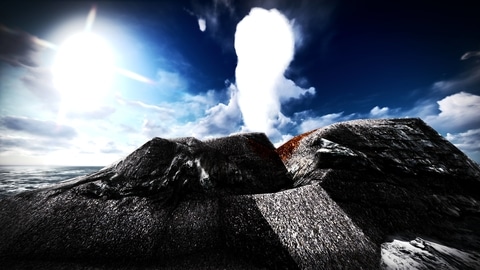No matter what suite of software tools you are using, it’s important to know how to get the best results when working on rendering and animation within your projects. The end result will be more satisfying for you and more impressive for your clients.
Here are some top tips on how to achieve spectacular rendering and animation results, every time.
Rule of thirds
The ‘rule of thirds’ is actually something more akin to the discipline of photography than to design and engineering. The rule of thirds proposes that you divide the image into nine equal parts. Place important compositional elements along the intersections within the image grid in order to create more interest than one centrally placed object would. You can use the Imaging Composition Helper tool to help you achieve this.
Use linear workflow for rendering
When working on rendering projects, always use a linear workflow to get better light fall-off and lighting in your renders.
You can achieve this by unchecking Enable Gamma/LUT Correction and setting Vray Colour Mapping to Gamma Correction and 2.2 Gamma, setting Gamma to 0.454 to input images.
Test renders
When working on test renders, lower the Reflection Glossiness, Shadow, and Global Illumination quality to speed-up the rendering process. If you use VrayDisplacementMode, always keep the subdivision values at a reasonably low level.
Low resolution models
High-resolution models will slow down rendering time, so always use low-resolution as a base when testing your lighting. Use only one light to begin with, and then gradually add more lights, one at a time to avoid messing up the lighting effect until you have it perfected.
Colour correction
By adding small, localised colour corrections, depth of field, a glow, a slight sharpening or a layer of noise on an image, you can make your render appear much more realistic and photographic in quality. Try using software such as Fusion or NUKE for these tasks. Photoshop can also be used post-processing, although you may need to bake some effects in order to retain them.
Project file organisation
It’s very important to keep your project files well-organised. Be sure to reset each scene that you are working on and manage each of your project’s new locations. In this way, you are ensuring that all paths, including previews, textures, and the export of meshes will be in the appropriate place in each newly created portfolio of correctly named folders.
Always work with the UNC file system, found under Preferences>Files.
Use gradient mapping
If you want to make your creation come alive with moving cloud shadows, use a spot light to map the projector with a noisy gradient. By reducing the noise, you can also simulate more muted or dappled lighting. To create moving cloud shadows, just animate the gradient’s phase.
Have your assets ready to use
By keeping all your assets in the right place and having them properly connected, you can be sure that they are ready for use when you need them. When working on group projects and farm rendering, it’s crucial that all your files are in order so that you can find them straight away. If you’re using 3ds Max, you can use the Asset Tracking tool to allow you to locate any missing files, such as proxies, meshes, and textures.
In conclusion
Whether you work as a graphic designer, engineer or architect, you can use rendering and animation to add movement, interest and realism to your projects. Use the top tips given above to make sure that you get the most from the software package you have chosen and enjoy improved results and happy clients.



